Arabica and Robusta so different, so complementary
Fellow caffeine addict, certainly when you are faced with choosing your next coffee, the words Arabica and Robusta may sound difficult to understand to most people. Indeed, it is these two varieties that dominate the vast universe of coffee, each with its distinctive characteristics that seduce coffee lovers from all over the world. But what makes Arabica so different from Robusta? And why do these differences have such a significant impact on your daily coffee? These questions take us on a journey through the coffee fields of the world, where we discover the peculiarities that distinguish these two varieties.
The blend Arabica, with its oval beans and an aroma that varies from sweet to fruity, is often associated with superior quality coffee. This variety prefers high altitudes, where the fresh air and mild climate accentuate its natural sweetness. On the other hand, the blend Robusta, with its rounder grains and a decidedly more intense and bitter taste, is better suited to warmer and more humid climates. This strain is renowned for its strong caffeine content, which not only offers an energetic awakening but also makes it more resistant to parasites.
A taste of history
To truly appreciate the differences between Arabica and Robusta, we must step back in time and explore the origins of coffee. This drink, which today accompanies moments of pause and sharing all over the world, has ancient roots. Arabica, with its birth in the forests of Ethiopia, was the first to be discovered and appreciated for its delicate and aromatic flavor. Local inhabitants consumed coffee beans not only for their flavor but also for the energy they were able to provide.
Robusta, on the other hand, entered the history of coffee later, originating from West Africa, in particular the Congo region. It was prized for its hardiness and its ability to grow in harsher conditions, where other coffee plants would have struggled to survive. The discovery of this variety has introduced a new character into the coffee landscape, with a stronger taste and a higher caffeine content, ideal for those looking for a greater impact from their cup.
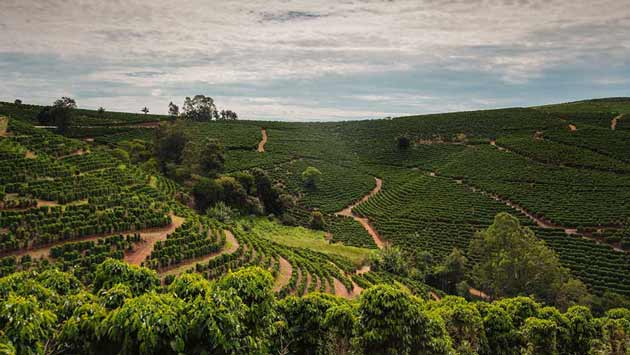
The duel: Arabica vs Robusta
When we immerse ourselves in exploring the world of coffee, we find ourselves faced with a historical comparison that has shaped the habits and preferences of consumers in every corner of the globe: that between Arabica and Robusta. This “duel” is not so much a competition as a celebration of the diversity that coffee, like few other drinks, can offer.
On the one hand, the Arabica variety, the oldest, is stands out for its delicacy and aromatic complexity, revealing a wide range of flavors and aromas, from sweet notes of chocolate and caramel to nuances of fruit and flowers. This richness is appreciated by coffee lovers for the refined and multidimensional sensory experiences it offers.
On the contrary, Robusta, characterized by a bold flavor profile and a robust structure, emerges from harsh climatic environments, developing remarkable resistance and a high caffeine content. This makes it ideal for those looking for energy, thanks to its strong taste and a light note of bitterness. Valued for its often overlooked qualities, Robusta is sought after for its full body and velvety crema, essential elements for a traditional espresso.
Ultimately, Arabica and Robusta are not rivals, but rather complementary in their contribution to coffee biodiversity. The choice between these two varieties certainly depends on personal preferences.
The link between coffee and its geographical origin is indissoluble, with the natural habitat playing a crucial role in defining the flavor profile of each variety. Arabica, for example, finds its ideal habitat in the mountain heights, where the temperate climate, combined with the alternation of sun and moderate rainfall, favors the development of beans with a complex and multifaceted aromatic range.
Robusta, on the contrary, is the emblem of resistance and resilience. Grown in tropical plains, where heat and humidity are constant, this variety develops beans with a strong personality, capable of offering an intense and full-bodied coffee. The growing environment, less hospitable and wilder, contributes to a vigorous and rich flavor profile, with a marked note of bitterness that awakens the senses.
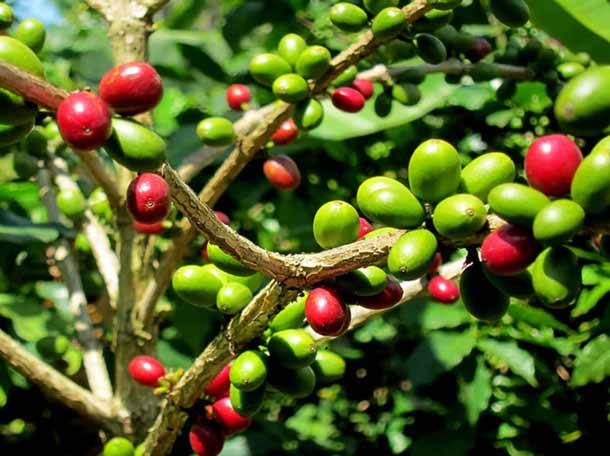
Comparison between Arabica and Robusta: the 10 main differences
It’s not a question of which is superior or inferior. Are we interested in a fair comparison? So let’s discuss the differences. Here are the 10 fundamental differences between Arabica and Robusta!
1. Taste:
It is known that most people have a preference for Arabica, but what is the reason? The answer lies in the flavor. Robusta, due to its high caffeine content and low sugar content, tends to have a more intense, bitter taste and with distinctive notes of earth and wood. Arabica, on the other hand, generally has a sweeter and fruitier flavour, and this is why it is more appreciated.
2. Caffeine content:
Arabica coffee has a significantly lower caffeine content than Robusta coffee. A Robusta bean contains approximately 2.7% caffeine, almost double the 1.5% present in Arabica.
3. Lipids and sugars:
As we have already mentioned, Arabica has almost 60% more lipids and almost double the sugars compared to Robusta. These two factors probably greatly influence why most people prefer the flavor of Arabica.
4. Cost:
Due to their lower value, greater strength and ease of production, Robusta beans are much cheaper and sell for about half the price of Arabica beans on the global market.
5. Bean shape:
The Robusta coffee bean is smaller, rounder, and with a straighter centerline, while the Arabica coffee bean is larger, oval, and with a more curved centerline.
6. Plant height:
The Arabica coffee plant is shorter, with a height of between 2.5 and 4.5 meters, while the Robusta plant can reach a height of between 4.5 and 6 meters.
7. Chlorogenic acid (CGA):
Chlorogenic acid (or CGA) is a powerful antioxidant present in coffee, very useful, together with caffeine, as a deterrent for insects. Robusta beans have a chlorogenic acid content that varies between 7 and 10%, higher than that of Arabica beans which contain between 5.5 and 8%.
8. Cultivation altitude:
Arabica and Robusta beans can be grown at different altitudes: Arabica is usually grown between 900 and 2000 meters above sea level, while Robusta can also grow at lower altitudes, between 600 and 1000 metres.
9. Provenance:
Both varieties of coffee come from Africa, but although they are “relatives”, they do not have the same origin. Arabica coffee comes from Ethiopia, while Robusta coffee originates from what is now Congo.
10. The main world manufacturers:
While many countries produce both varieties, some are more specialized: Vietnam is the world’s largest producer of Robusta, while Brazil is the world’s largest producer of Arabica.
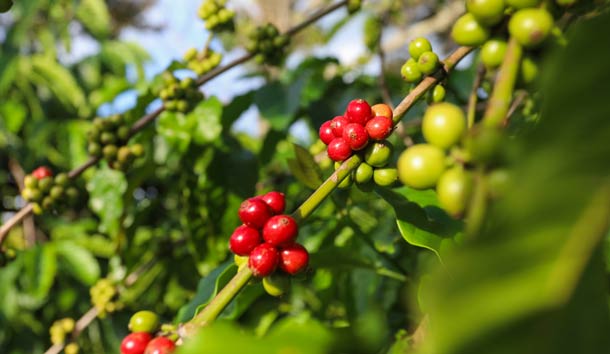
A question of chemistry
It is not only the environment that distinguishes these two queens of coffee, but also their intrinsic chemical composition. Arabica, with a caffeine content of around half that of Robusta, offers a naturally sweeter and less bitter taste. This reduction in caffeine translates into a more delicate and less aggressive aromatic profile, favoring sweet and fruity notes, which seduce the palate in a subtle but decisive way.
Robusta, thanks to its higher caffeine content, boasts a more robust character and a more persistent aftertaste. This characteristic not only makes it more resistant to parasites during growth, but also gives the final drink that vigor and strength that many look for in their daily coffee, especially in preparations such as espresso, where body and crema are fundamental.
The art of mixing
The magic of coffee also lies in the ability to combine different varieties to create unique blends, where the characteristics of Arabica and Robusta harmonize in a balance of flavors. The arabic blend, with its elegant and delicate notes, brings sophistication and complexity, while the robust blend introduces body and intensity, offering a more marked structure to the final drink. This blending process allows roasters to play with flavors and textures, satisfying a wide range of tastes and preferences.
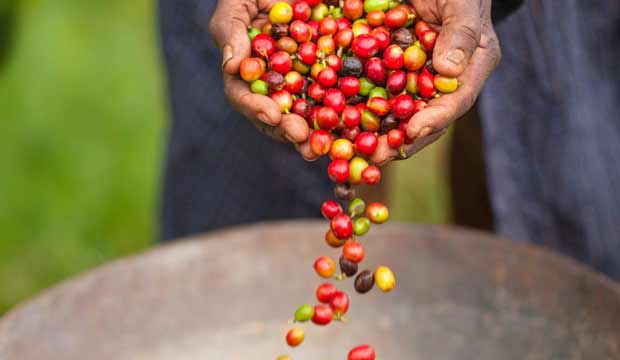
Robusta’s return to the limelight
Robusta, long seen as Arabica’s little sister, is rediscovering its dignity in the world of quality coffees. Through increasingly refined cultivation and processing techniques, this variety is proving that it can offer complex and pleasant taste experiences, challenging the prejudices that saw it relegated to a secondary role. The renewed interest in Robusta reflects the market tendency to enhance the diversity and richness of coffee, recognizing each variety for its unique characteristics and the specific contribution it can make to the perfect cup.
Coffee friend, I hope this journey between Arabica and Robusta has enlightened you and inspired you to experiment beyond the boundaries of taste. Remember, every cup of coffee is a world to explore. Until the next adventure!
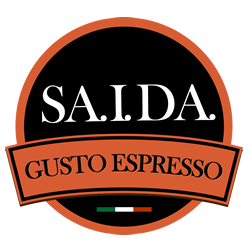
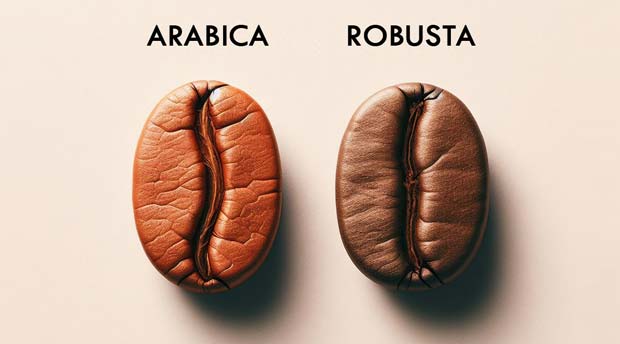
Visita il nostro e-shop e scopri tanti prodotti a prezzi vantaggiosi!